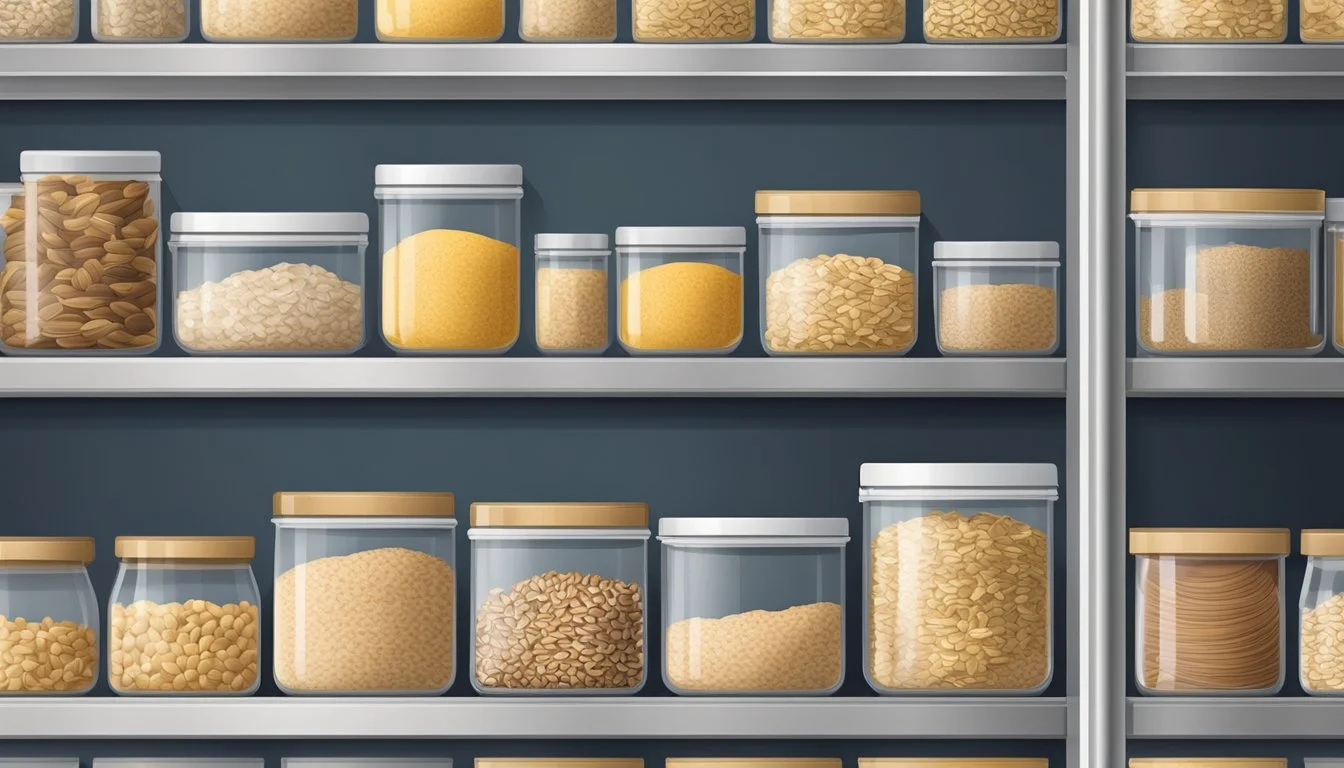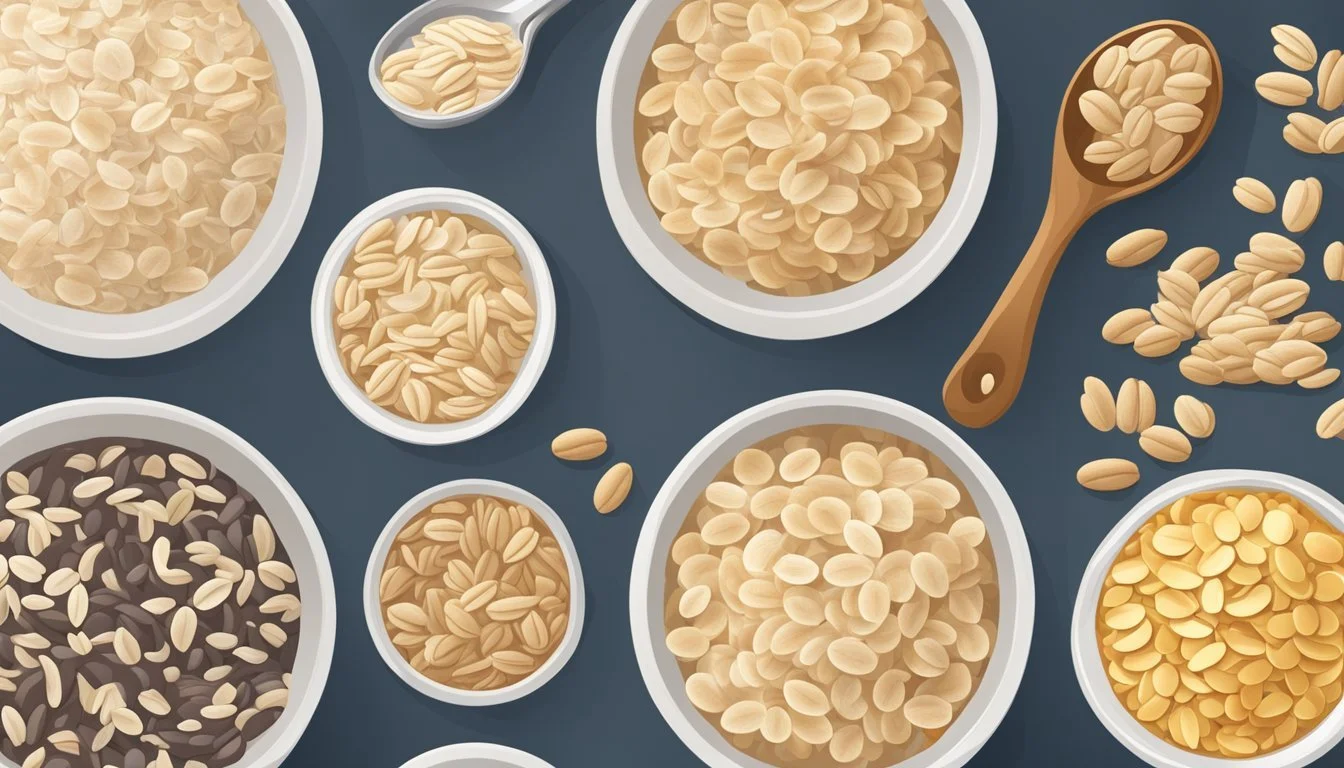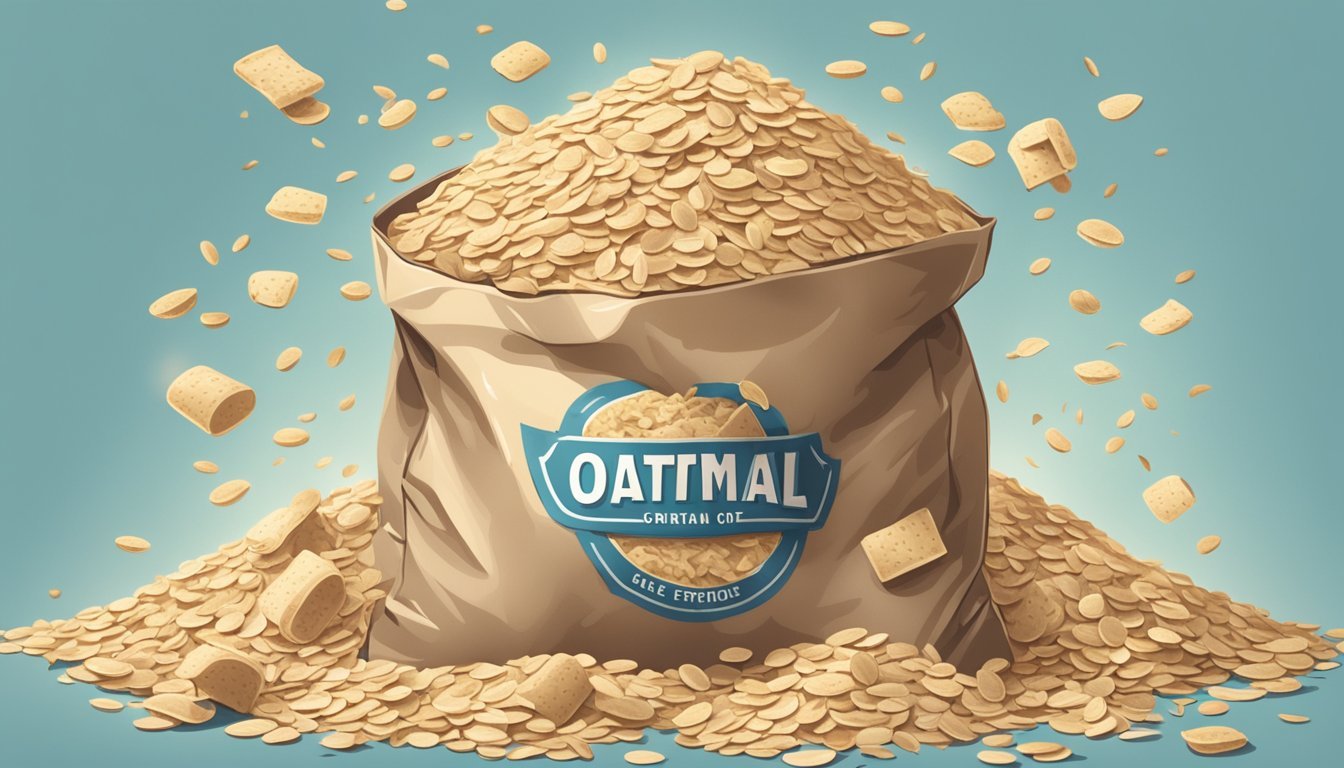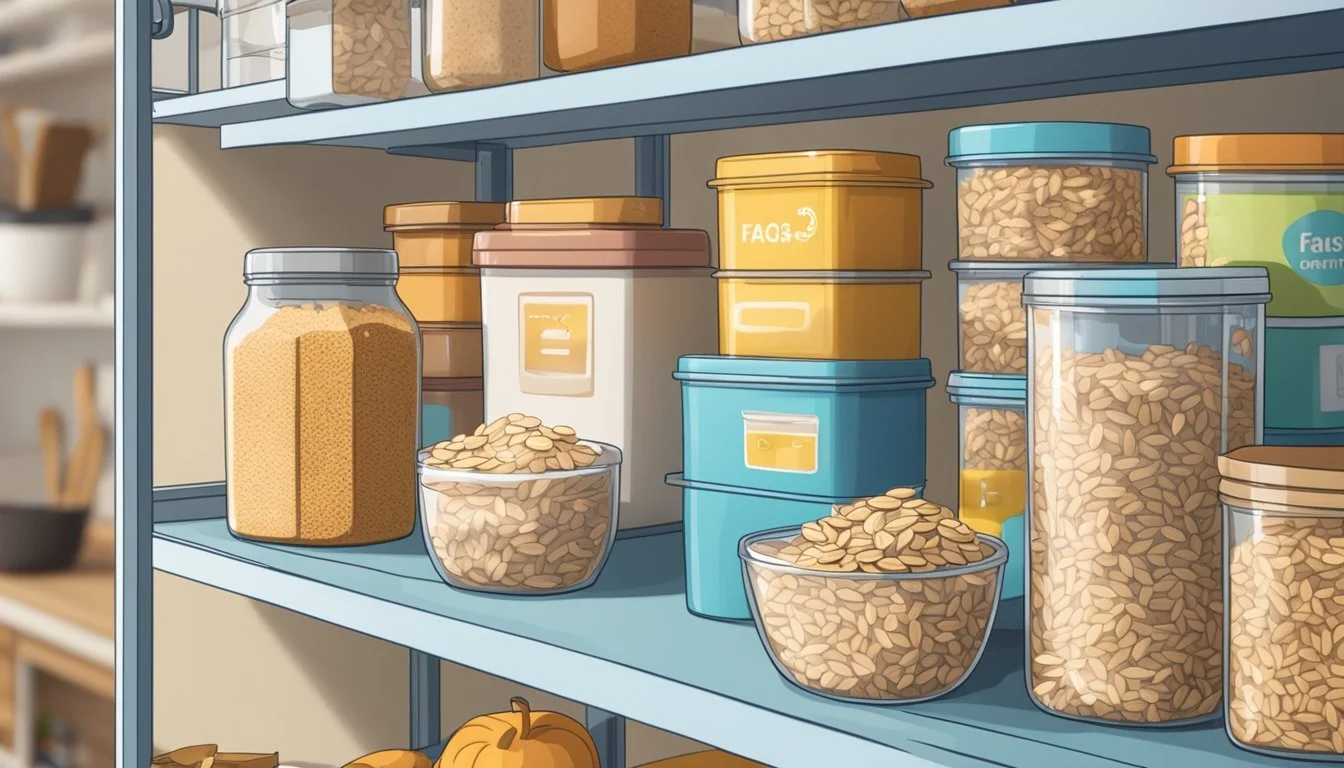Does Oatmeal Go Bad?
Understanding Shelf Life and Spoilage Signs
Oatmeal is a staple in many households, appreciated for its nutritional benefits and versatility. It comes in various forms, such as steel-cut oats, rolled oats, and instant oatmeal, each with a differing shelf life. When stored properly in a cool, dry place, unopened oatmeal can last for a considerable time. Steel-cut oats can be stored for up to two years, while rolled oats have a recommended shelf life of one to two years. Instant oatmeal has the shortest shelf life due to its processed nature but will typically last at least six to nine months.
Despite its longevity, oatmeal does not last indefinitely. Over time, it can deteriorate in quality, even becoming rancid or developing an off odor and taste. Indicators of spoilage include changes in texture, smell, and color. While a "best by" or "use by" date provides a guideline for peak quality, it's not an absolute indicator of safety. Oatmeal past this date may still be safe to consume if there are no signs of spoilage, though there may be slight changes in flavor or nutritional value.
Once cooked, oatmeal's shelf life shortens considerably, and it should be consumed within just a few days when refrigerated. For longer storage, cooked oatmeal can be frozen, extending its edible period. The longevity of oatmeal relies significantly on storage conditions, and proper handling is crucial to prevent the growth of mold and bacteria which could render it unsafe for consumption.
Assessing Oatmeal's Shelf Life
Oatmeal is a staple in many households due to its nutritional value and long shelf life. However, like all food products, oatmeal does have an expiration date that consumers should be aware of to ensure they are enjoying a fresh, safe product.
Identifying Spoiled Oatmeal
Oatmeal's quality and safety can be compromised when it goes bad. Present signs of spoiled oatmeal include a noticeable change in color, an unpleasant odor, and a stale or off taste. Additionally, any visible mold growth or signs of insect infestation indicate that the oatmeal is not safe to consume and should be discarded. Consumers should inspect both dry and prepared oatmeal before consuming to ensure it has not spoiled.
Expiration and Best Before Dates
The longevity of oatmeal's freshness is often indicated on the packaging by the expiration date or best before date. Unopened and properly stored oatmeal can typically last between 12 to 18 months, with the possibility of extending up to 2 years if kept in an airtight container. It's important to differentiate between the two terms:
Expiration date implies that the product should not be consumed after this date as it might not only lose quality but could potentially become unsafe.
Best before date suggests that the oatmeal may still be safe to consume after the date, but its quality in terms of flavor and texture might decrease.
For cooked oatmeal, the shelf life is significantly reduced, and consumers are advised not to keep previously prepared oatmeal for longer than 3 to 5 days when stored in the refrigerator.
Factors Affecting Oatmeal Quality
Careful consideration of environmental variables is crucial to maintaining the quality of oatmeal over time. Two key factors that influence oatmeal's freshness and safety are moisture levels and the conditions under which it is stored.
Impact of Moisture on Oatmeal
Moisture is the nemesis of oatmeal longevity; it paves the way for spoilage and mold growth. To safeguard oatmeal, one must ensure storage in a moisture-free environment. When oatmeal comes into contact with moisture, whether from cooking or ambient humidity, its shelf life diminishes rapidly. Oats should be kept dry and, once cooked, refrigerated and consumed promptly.
Temperature and Storage Conditions
Temperature changes can also compromise oatmeal's integrity. Fluctuations in temperature can cause condensation inside storage containers, leading to increased moisture. The ideal practice is to store oatmeal in a cool, dry place, such as a pantry or cupboard, away from direct sunlight and heat sources. For extended shelf life, ensure the temperature is stable. A refrigerator can be used for storing cooked oatmeal, but for raw oats, a sealed container in a dry cupboard is recommended.
Proper Storage Techniques
Proper storage of oatmeal is essential to maximize its shelf life, whether it's uncooked or has been prepared. An emphasis on the right environment and container can significantly prolong the oatmeal's quality and prevent spoilage.
Storing Uncooked Oatmeal
To store uncooked oatmeal, an airtight container in a cool, dry place is recommended. The original packaging can suffice if it’s resealable; otherwise, transferring the oats to a container with a tight-fitting lid is ideal. This prevents moisture and pests from compromising the oats' quality. One may categorize the storage as follows:
Unopened oatmeal:
Shelf life: Up to 2 years
Storage location: Pantry or another cool, dry place
Opened oatmeal:
Shelf life: 6 months to 1 year
Storage suggestion: Place in an airtight container; label with the date of opening for reference
For long-term preservation, unopened packages of oatmeal can also be stored in the freezer, which can extend the shelf life beyond the "best by" date without altering taste or texture.
Preserving Cooked Oatmeal
Once oatmeal is cooked, it should be stored in the refrigerator if not consumed immediately. Follow these storage tips:
Transfer to a container that can be sealed tightly.
Refrigerate within two hours of cooking to prevent bacterial growth.
Cooked oatmeal shelf life: 3-5 days in the refrigerator.
For freezing cooked oatmeal:
Allow the oatmeal to cool completely.
Portion into freezer-safe bags or containers.
Freeze: cooked oatmeal can last for 3 months when properly frozen.
Each portion should be thawed in the refrigerator overnight or reheated directly from the freezer using a microwave. This method retains the oatmeal's taste and texture for future consumption.
Identifying and Preventing Contamination
When it comes to oatmeal, one of the key concerns is ensuring that the product remains free from mold and insect infestations. Careful observation and storage can prevent food spoilage and potential food poisoning.
Detecting Mold and Insects
Mold typically appears as fuzzy spots that can be various colors, including white, green, or black. A sour or musty odor is often associated with mold growth. Insects, such as weevils, may also infest oatmeal and are detected by their presence in the package. They may leave behind web-like substances or larvae, an indication that the oatmeal is contaminated and should not be consumed to avoid the risk of food poisoning and spoilage.
Prevention of Food Spoilage
To prevent food spoilage, proper storage of oatmeal is essential:
Seal it tight: Keep oatmeal in an airtight container to protect against moisture and pests.
Stay cool: Store in a cool, dry place to inhibit the growth of any molds.
Hygiene matters: Use clean utensils to serve oatmeal to avoid cross-contamination.
Trust the senses: Regularly check oatmeal for signs of spoilage such as changes in color, smell, or taste.
By following these protocols, it's possible to extend the shelf life of oatmeal and ensure food safety.
Understanding Oatmeal Varieties
Oatmeal's shelf life varies significantly based on the processing methods and type of oats, from steel-cut to instant formulations, each with their own storage considerations.
Shelf Life by Oat Type
Steel-Cut Oats: These are whole oat groats that have been chopped into pieces. Due to minimal processing, steel-cut oats generally retain freshness for up to 18 months when stored properly in a cool, dry place.
Rolled Oats (Old-Fashioned): Rolled oats are steamed and flattened, which extends their shelf life to about 2 years. The steaming process stabilizes the oats, making them less prone to rancidity.
Instant Oatmeal: This variety is even more processed, as oats are pre-cooked and then dried, which allows for rapid preparation. Instant oatmeal typically has a shelf life of around 1 to 2 years, assuming it remains unopened and stored properly.
Special Considerations for Flavored and Instant Oatmeal
Flavored Oatmeal: Often contains additional ingredients like sugar, salt, and flavorings, which may impact the shelf life. Consumers should be more vigilant about the expiration dates on flavored oatmeal, as additives can shorten the product's prime quality period.
Unstabilized Oats: A less common type that hasn't undergone the steaming process. They are more susceptible to spoilage due to higher oil content, hence they last approximately 3 to 4 months.
It is crucial for consumers to store oatmeal in airtight containers to mitigate exposure to moisture and pests, and to check expiration dates when determining freshness, particularly for flavored and instant varieties.
Health and Nutritional Information
Oatmeal garners acclaim for its high fiber content and balanced nutritional profile, which contribute to various health benefits. It stands as a wholesome food that can support a healthy diet when stored and consumed properly.
Oatmeal Benefits
Oatmeal is a nutrient-dense food providing a rich source of fiber, both soluble and insoluble, which aids in maintaining digestive health and regularity. The soluble fiber in oatmeal, particularly beta-glucan, has been recognized for its role in lowering cholesterol levels and stabilizing blood sugar. Regular consumption of oatmeal can also contribute to satiety, potentially assisting with weight management.
The health benefits of oatmeal extend to providing essential vitamins and minerals. Oatmeal typically contains B vitamins, iron, magnesium, and zinc, among others. The presence of antioxidants in oats, such as avenanthramides, helps combat oxidative stress and inflammation.
Nutrient Preservation
To maximize the nutritional value of oatmeal, proper storage is key to preventing spoilage and preserving its vitamins and minerals. Raw oats should be stored in a cool, dry place, and once cooked, oatmeal retains most of its nutrients. However, over time, the antioxidant levels may diminish, and exposure to air can increase the fat content's susceptibility to rancidity. As such, it is important to consume oatmeal while it is fresh and to adhere to storage guidelines to maintain its health-promoting properties.
Creative Uses for Expired Oatmeal
Even though oatmeal has passed its prime, it can still be put to great use. Whether enhancing recipes or serving as a household tool, expired oatmeal need not be wasteful.
Non-Food Applications for Oats
Expired oats make excellent materials for non-edible uses around the home. They can be utilized in several ways:
Deodorizing Agent: Oats can absorb odors, making them a handy deodorizer for refrigerators and shoes. Simply fill a breathable fabric bag with oats and place it in the desired area.
Skin Care Products: With natural soothing properties, oats can be ground into a fine powder and incorporated into homemade face masks and scrubs. They help in exfoliation and improve skin health.
Recipes Using Older Oats
While one should be cautious with expired food items, older oats can often be incorporated into recipes provided they haven't turned rancid. Here's how one can repurpose them:
Breakfast Items: Mix oats with ingredients like sugar, dried fruit, and spices to create nourishing breakfast options.
Meat Extender: Adding oats to ground meat can both extend the portion and add nutritional value without affecting the taste significantly.
When using expired oats in any form, always ensure they don't exhibit signs of spoilage such as a rancid smell or visible mold. If the oats pass the smell and sight test, they can be safely repurposed.
FAQs About Oatmeal Storage and Safety
How should oatmeal be stored to maximize shelf life?
It is advised to store oatmeal in an air-tight container in a cool, dry place to prevent moisture and bugs from spoiling the product.
For long-term storage, one may consider keeping it in a refrigerator or freezer, which can extend its shelf life.
Does oatmeal expire or go bad?
Oatmeal does come with a "best by" or "use by" date which often indicates peak quality. However, it may remain safe to consume beyond this date if stored correctly.
What are the signs of spoilage in oatmeal?
A change in odor, taste, or the presence of mold or bugs can signal that oatmeal has gone bad.
Any noticeable change in color or a rancid smell are clear indicators that the oatmeal should be discarded.
Is it safe to eat oatmeal past the expiration date?
If the oatmeal has been stored properly and shows no signs of spoilage, it can often be consumed safely after the expiration date. However, there may be a slight degradation in flavor or nutritional value.
Can cooked oatmeal be stored and reheated?
Yes, cooked oatmeal should be stored in a refrigerator and consumed within a few days.
It is important to store it in a covered container and reheat it until it's hot throughout to ensure food safety.
Conclusion
Oatmeal is generally regarded as a durable pantry staple, with a shelf life that extends well beyond its printed expiration date when stored properly. The shelf life is typically around 12 months past the expiration date for unopened, properly stored packages. However, once opened or if improperly stored, this period may decrease.
Proper storage involves keeping the oatmeal in:
An airtight container
A cool, dry place
Away from direct sunlight
For storing oatmeal, the environment should be free of moisture and fluctuating temperatures to prevent spoilage from mold and bugs. Following these guidelines will maximize its longevity and maintain its quality.
Here's a quick reference for oatmeal storage:
Storage Type Shelf Life Unopened Up to 2 years Opened (Properly) Up to 1 year Cooked Oatmeal Approximately 3 days
It should be noted that although oatmeal may remain safe to consume past these time frames, a slight change in flavor, color, or nutritional value might be observed.
In summary, oatmeal does have the potential to spoil, particularly if not stored correctly. By adhering to the ideal storage conditions—airtight, cool, and dry—one can expect to enjoy their oatmeal without quality degradation for an extended period. Observing the oatmeal for any signs of spoilage, such as off odors, discoloration, or the presence of mold before consumption, is always recommended.










